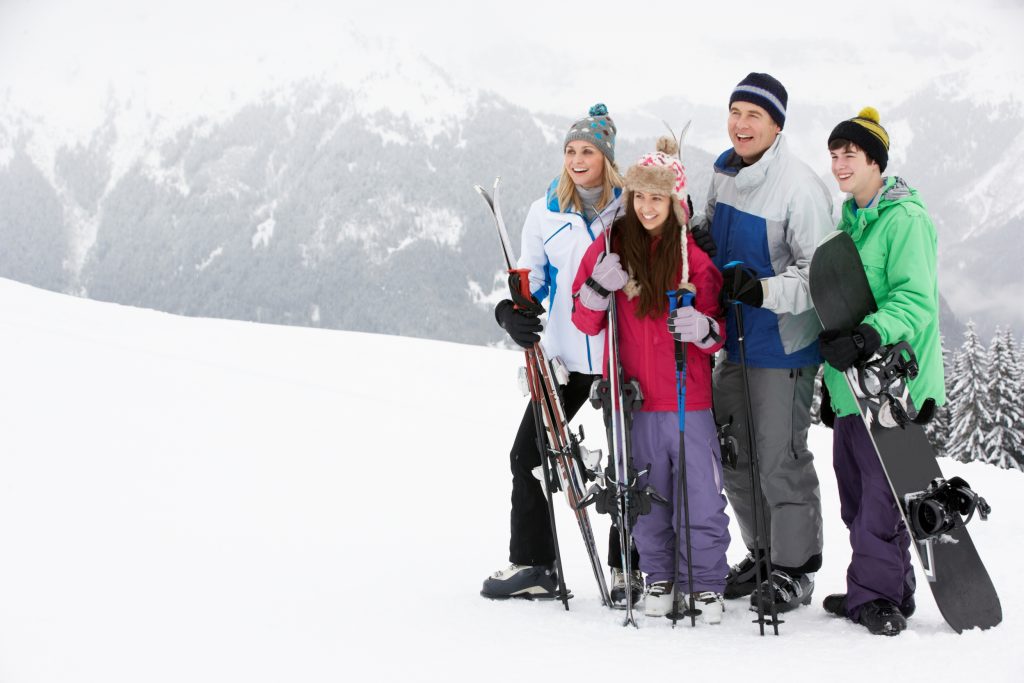During the winter time, skiing and snowboarding are favorite sports not only of sports aficionados, but also of whole families looking to spend a wonderful and active time on the slopes. The atmosphere of mountains covered in snow is magical, but we shouldn’t forget to keep ourselves and our loved ones safe and sound either.
Not many skiers and snowboarders prepare for strains to the body that these sports inflict. Improper preparation, varied snow conditions or poor judgment may easily cause unexpected injuries.
WHAT CAUSES SKIING AND SNOWBOARDING INJURIES?
Many of the snowsport injuries are traumatic. They are often caused by being on dangerous grounds, lift accidents, falls, and collisions. Fatigue after a long, active day or poor judgment may be another reason, too. The most common causes of this type of injuries are:
- Timing skiing/snowboarding with no breaks
- Skiing/snowboarding without consideration to aptitude level
- Unsuitable/faulty equipment
- Inadequate adjustment to altitude
- Dehydration/fatigue
- Skiing/snowboarding off trail or in secluded areas
- Failure to adjust to posted warning signs
COMMON TYPES OF FEET AND ANKLE INJURIES FROM SKIING AND SNOWBOARDING
These (and sometimes other) issues may lead to an injury to your feet and/or ankles. Please, read about the most common types of skiing/snowboarding foot and ankle injuries:
1. Skier’s Toe / Toe Bang
Skier’s toe, also known as toe bang (subungual hematoma), is when there is bleeding under your nail, and your toenail turns black. It happens when the ski boots are not well fitted, creating a condition where the foot smashes back and forth, leading to repetitive trauma. You may feel a great deal of pain for many days subsequent to your injury. The hematoma needs to be drained, so seek professional help immediately.
How to avoid skier’s toe?
To avoid the occurrence of skier’s toe/toe bang, get properly fitted boots – don’t borrow someone else’s pair. If renting a pair of boots at the resort, make sure to try them on and walk around for a bit before committing to a pair and hitting the slopes.
2. Ankle Sprains
It’s one of the most typical injuries of winter sports.. It occurs when a person lands on the exterior part of the foot and twists the foot inwards. In consequence, the tissue on the outside of the foot over-stretches and tears. The result of this injury is often swelling and pain.
How to avoid ankle sprains?
In order to prevent an ankle sprain, use snug-fitting ski boots with correctly adjusted fastenings.
3. Foot Bruises and Blisters
They may not be injuries as serious as others on our list, but they can take their toll, as well. Bruises can be caused by a poor boot fitting, or by tight fastenings. Blisters may be caused by high temperature, moisture and abrasions inside the boot during long days skiing or snowboarding.
How to avoid foot bruises and blisters?
In order to prevent this type of injuries, we recommend that you double up on socks, use an anti-chafing product to reduce friction plus an antiperspirant or powder. You may also tape your feet, using a basic athletic tape. The most useful advice we can give you, though, is to always fit your boots properly and keep your feet dry.
Look out for Part 2 of this guide of common ski and snowboard injuries of foot and ankle, as we will present the rest of our list, containing explanation of Morton’s Neuroma, Ankle or foot fractures, and Metatarsalgia – alongside the ways to avoid them.
WHAT SHOULD I DO IF I SUSTAIN A FOOT OR ANKLE INJURY FROM SKIING OR SNOWBOARDING?
See a foot doctor in Cary, at Raleigh Orthopaedic Clinic if:
- You heard a “pop” sound at the time of injury.
- The pain in your ankle or foot was instant and the swelling did not subside within the first few days.
- You have continued instability in the ankle even when you are back to walking.
In the time following your injury, you may be unsure if what you feel is indeed a problem that needs a podiatrist’s attention. Try to remember that some injuries are not immediately recognized – they can flare up even after several days. The sooner you see a foot doctor in Cary, the sooner your condition can be treated and potential for further damage will be reduced.
The board certified, fellowship trained podiatrists at Raleigh Orthopaedic Clinic bring together many years of experience to diagnose and treat even the most complex foot and ankle conditions for patients of all ages.
At Raleigh Orthopaedic Clinic our foot doctors and staff are recognized as leaders and innovators in the field of orthopaedics. Our foot and ankle surgeons regularly develop content designed to educate our patients with high-quality orthopedic knowledge sources.
Make an appointment with your foot doctor in Cary today to get specialized treatment with a personal approach.
*Please note: Our new Cary office is opening February 4, 2019.
New address: 115 Kildaire Park Drive, Suite 102 Cary, NC 27518
https://www.childinjurypreventionalliance.org/skiing-snowboarding-safety/
